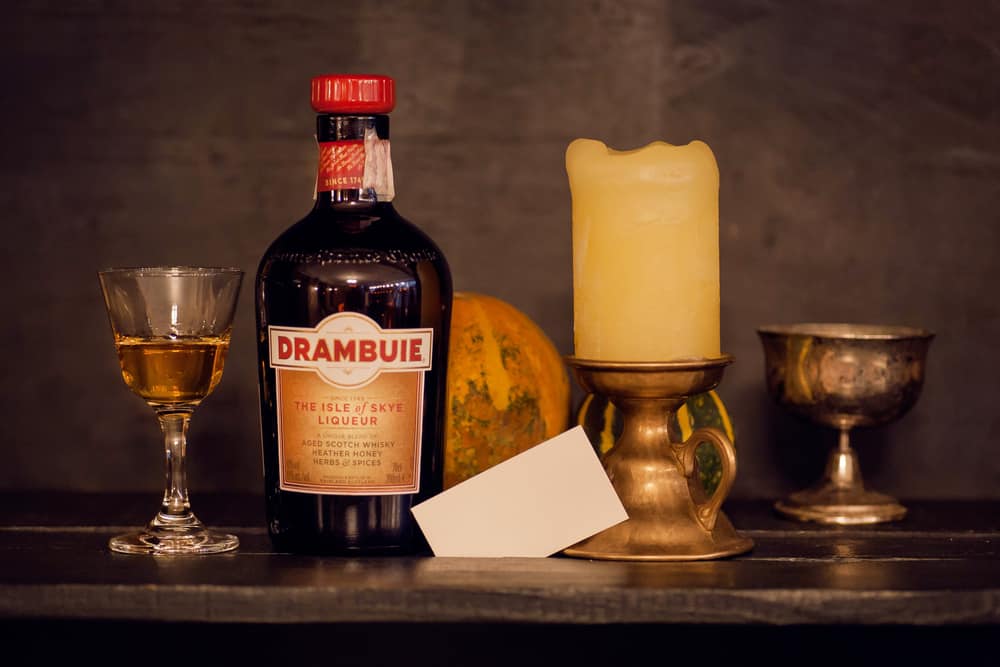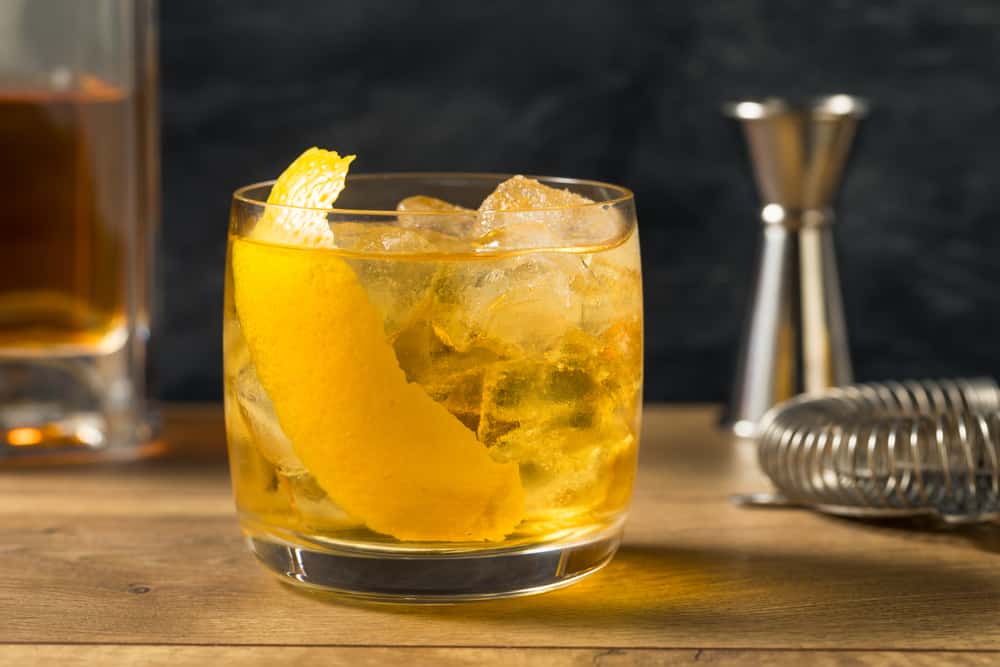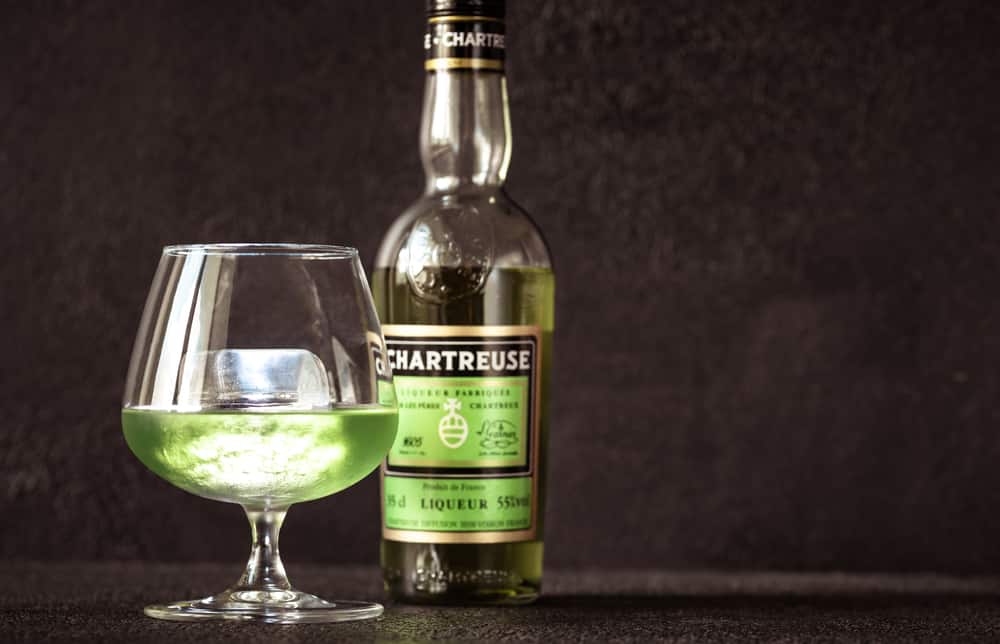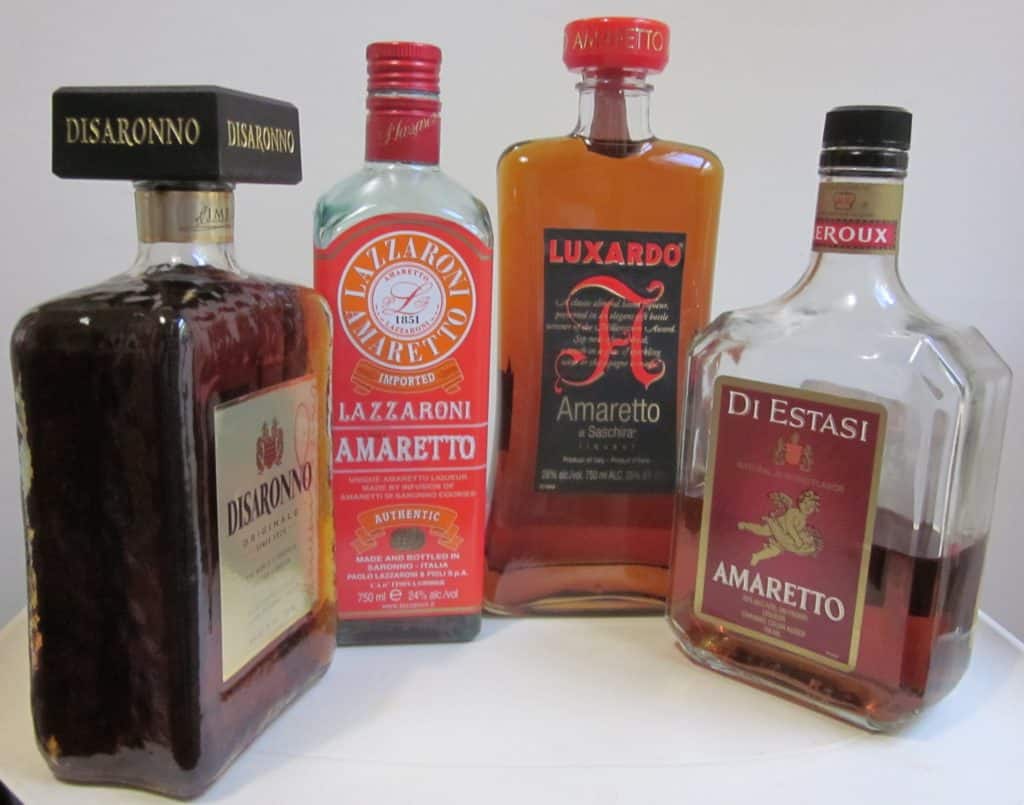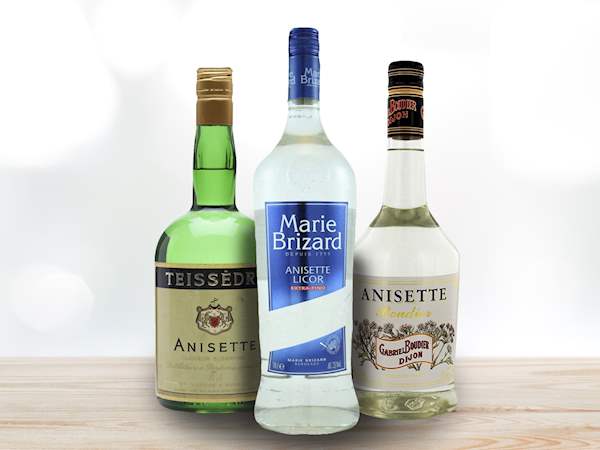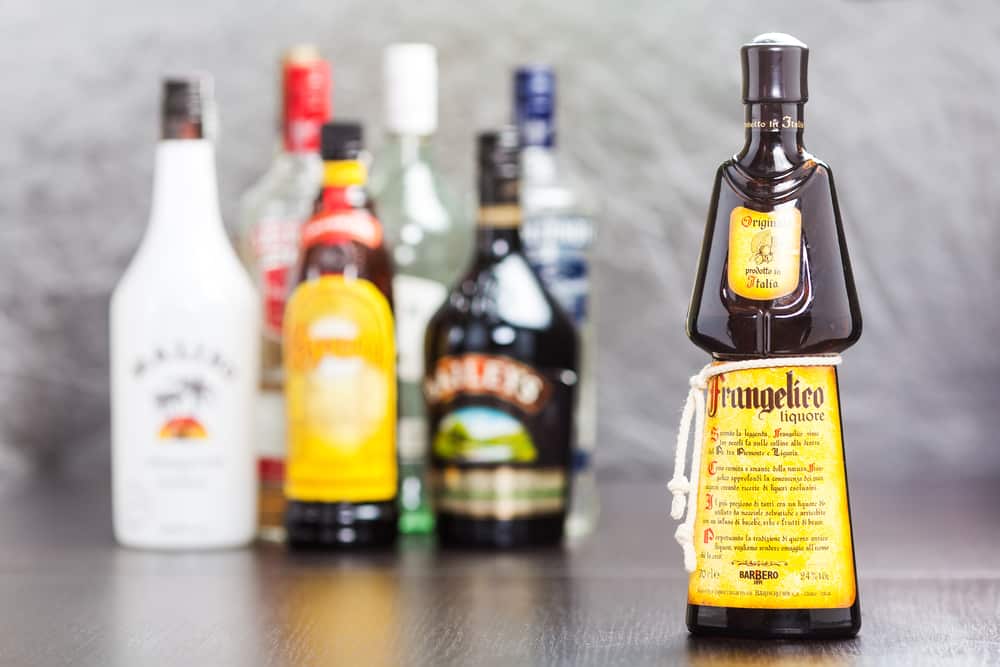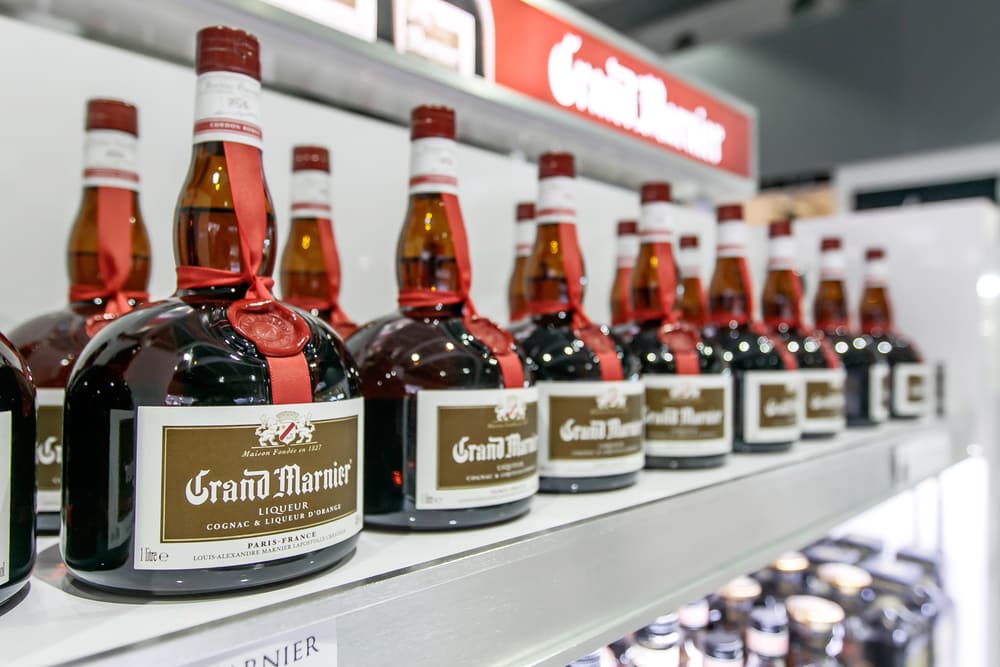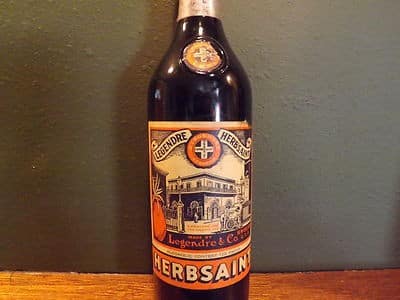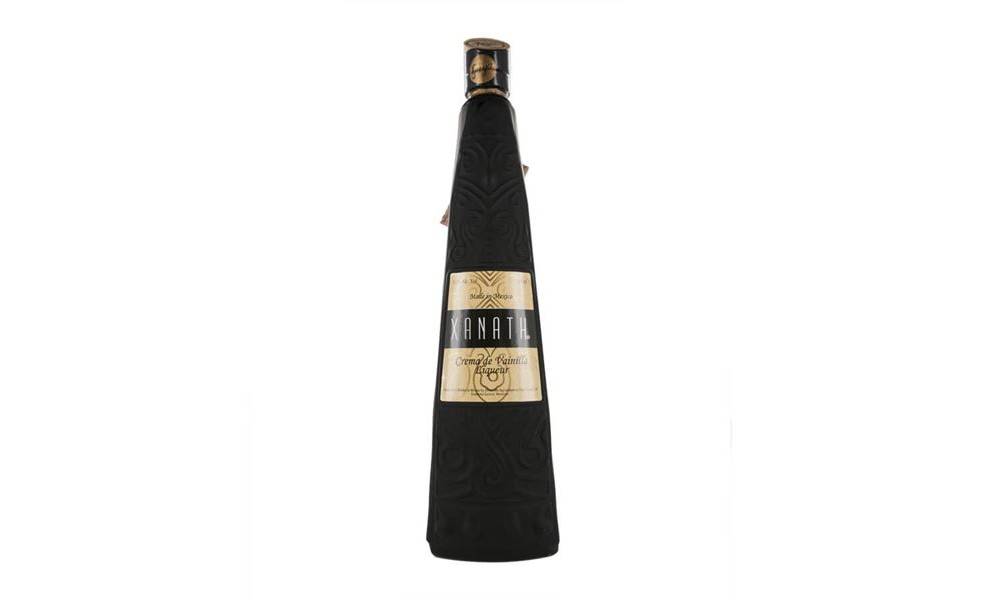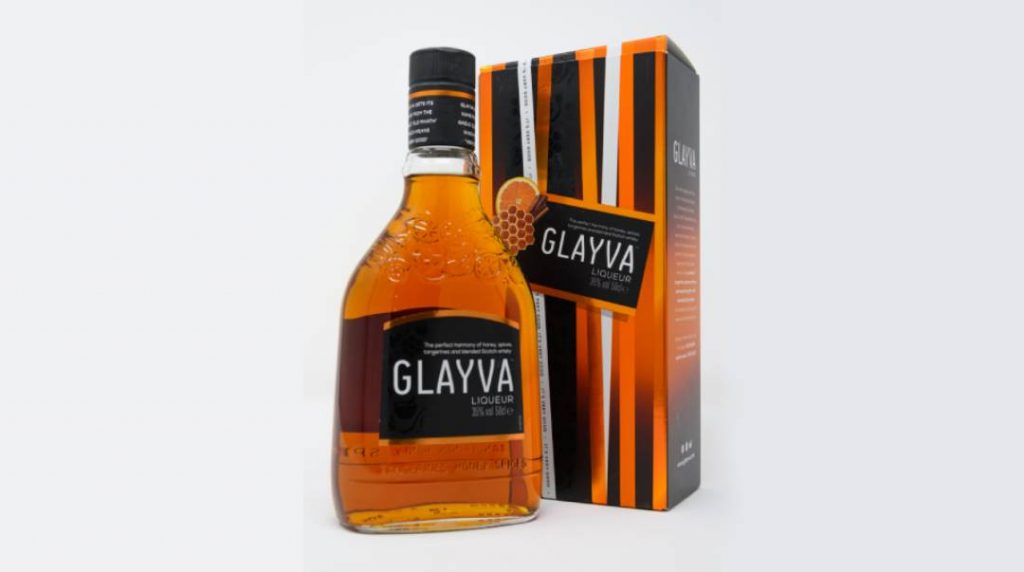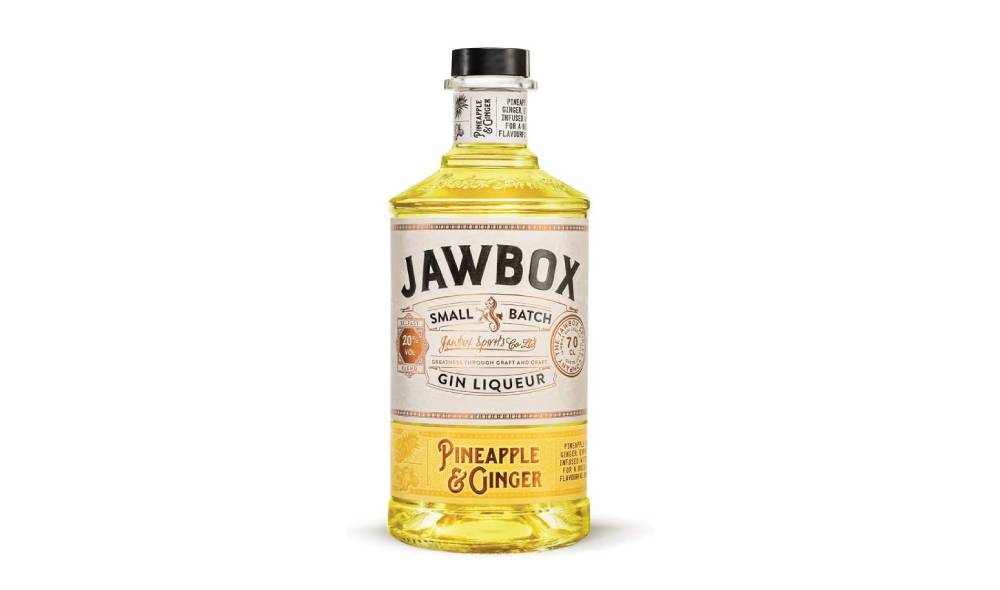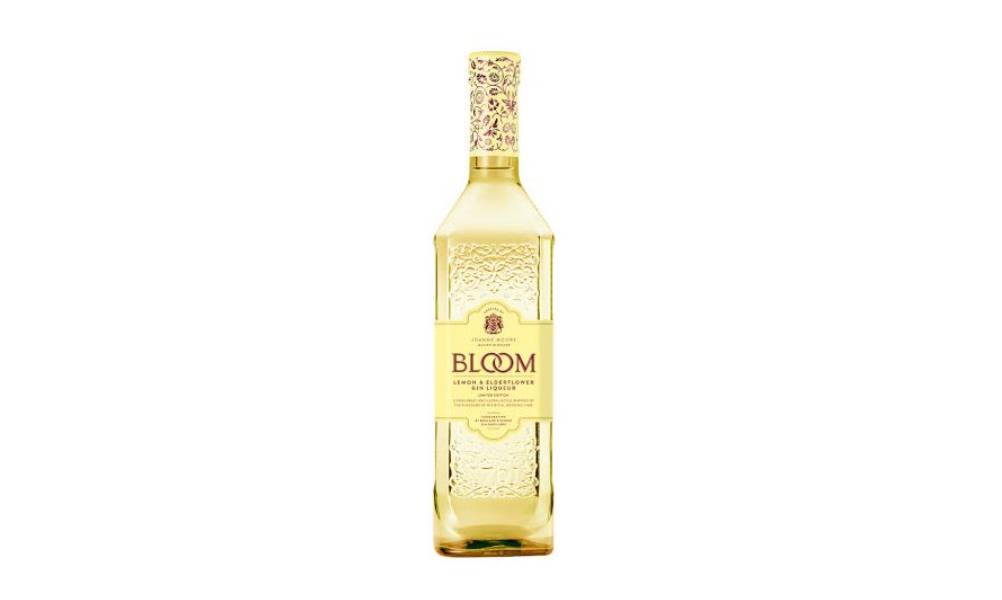
Whether it is to spice up vodka pasta or create a wonderful note in other dishes, liqueur is a staple when it comes to cooking.
While most dishes will require you to cook the alcoholic bitterness out, Benedictine is a favorite addition to many cocktails.
It is a classical and well-loved flavor and adds a distinguishable flavor of sage, nutmeg, cedar, citrus, and notes of honey in many cocktails and drinks thus is served in many bars across Europe as an addition.
It is also used to add that same great flavor in sauces, especially pasta sauces, and is also used in poaching fish and other meats.
Created in the 16th century by monks, Benedictine was a great favorite owing to its neutral flavor, since medicinal alcohols back then were very, very bitter.
It is often sweetened with honey but has 27 different earthy ingredients that go into its making and give it distinctive qualities.
Since it is very herbal and local to European regions, it is often not easily or readily available in other parts of the world. If you want to add an imitation of its wonderful flavor as a cooking liqueur then read on!
Substitutes For Benedictine
1. Drambuie
This is a staple drink in Scotland and is well-loved all across the world.
It has a distinctive golden color and has a wonderful flavor of spices such as cinnamon and nutmeg, herbs, heather honey, and the Scotch whisky base lays a delicious solvent foundation to the liqueur.
Many different types of alcoholic beverages are made all the better in flavor by the addition of Drambuie.
The smooth, rich taste of the liqueur can be lightened and made more delicate by adding notes of spiced honey or adding citrus to the drink in which is being added.
It forms the base for some beloved cocktails because it is neither sour nor bitter, and leaves a good aftertaste.
If you can’t stomach powerful alcohol but still want to get the fun and games of being tipsy, Drambuie’s taste will transport you into that realm.
The oak, anise, and orange peel notes can equally wonderful as a bolder drink served straight during weekend parties.
If you still want great flavor in your cocktails, they can be served on the rocks. It adds a wonderful taste to alcohol drinkers’ favorites like ginger ale, ginger beer, and subtle, enjoyable alcoholic tastes to club soda.
It can be used as a dessert float and as an addition to dessert for woody, citrusy flavors.
2. Chartreuse Liqueur
Made in France, Chartreuse Liqueur is a well-loved herbal liqueur used in cooking and in alcoholic beverages alike. This was also invented by monks around 400 years ago for its medicinal properties and health benefits.
Available as yellow chartreuse and green chartreuse options, the blend used in creating this liqueur is a secret!
Created with around 130 herbs, this is a staple with any place selling alcoholic beverages, a favorite in many types of cocktails.
It is consumed in the UK, Germany, Japan, Australia, Mexico, and the US, especially as a complement to dessert items and chocolates.
This liqueur brings the added advantage of having absolutely no artificial colors, preservatives, or ingredients. Usually aged around 5 years, it has a smooth and rich mouthfeel.
For people who are concerned about the sugar content in alcoholic drinks like beer and tonic, chartreuse has low alcohol content and is made with medicinal herbs that are good for health.
Green chartreuse has a higher alcohol content of around 55% and has a distinct floral flavor. When you sip on the drink, you can taste cinnamon, rosemary, thyme, cloves, and citrus flavors.
This is the stronger one among the two since yellow chartreuse has a softer, smoother flavor of honey, licorice, anise, violet, saffron, and citrus.
Since these are mostly beneficial liqueurs, are made with healthier and more expensive ingredients such as saffron, they are on the pricier side.
Restaurants add them to their more expensive desserts, and bars pair them with gin, rum, and brandy to enhance the flavors of their drinks.
3. Sake
This is perhaps the most important substitute for Benedictine as a cooking liqueur. Sake is a Japanese liqueur made with rice and water. The better the quality of the rice and water is used for sake, the better the results.
Contrary to common perception, sake is not made through the general process of making rice wine by fermenting the fruit content, rather it is made through a brewing process similar to beer-making.
This liqueur is perfect for marinating fish and meat to tenderize them, and also to remove the fish odor. As the alcohol content cooks out, so does the unpleasant fishy smell.
Sake brings out a sweeter flavor in dishes, because of the starch content in the rice. It can be used to make a number of Japanese dishes like nimono (simmered dishes), soup, stocks, and yakimono (grilled dishes).
4. Brandy
Brandy is used for many things and is a good replacement for Benedictine in cooking and drinking. It is made by distilling wines and has ranging alcohol content from 35% to 60%.
The darker the color of the brandy, the more it has aged and the stronger the flavor profile will be. Brandy can be cooked into sauces and also used at room temperature.
Regular brandy is readily available and is relatively inexpensive.
This is one of the unconventional substitutes that adds flavor to various meals and food items. If you want to go for a quick solution and use something that may already be available around your house, brandy is a good option.
What Other Liquids Can You Use?
There is a variety of liquids that can be used in place of Benedictine and can go well with cuisines as well.
- Amaretto
The ultimate favorite of any pastry chef, this almond liqueur was birthed in Italy. Macaroon cookies, cheesecake, and other delectable desserts are made using this almond-flavored liqueur.
- Anisette
Much like the name suggests, this French liqueur is made with anise seeds. It has low alcohol content and has a sweeter flavor profile, perfect for desserts and soups.
- Frangelico
This Italian beverage and liqueur are made with hazelnuts as the primary ingredient. This gives it a nutty flavor perfect for cheesecakes, desserts, bread, and mousse recipes.
- Curaçao
If you find these brightly colored liqueurs in shot glasses on any Caribbean island, they will taste like bitter orange. Manufactures on the Caribbean island of Curaçao especially flavor theirs with this bitter, lasting taste.
Even if the drink appears in bright colors, it is only food color and there is no impact on the flavor. This is perfect for taking shots and playing games such as beer pong.
- Grand Marnier
This liqueur is the reason behind the orange taste on the duck meat. Made with brandy and orange, it is used in savory items and also many dessert items crepes, mousses, and soufflés.
- Herbsaint
This isn’t just an alternative for Benedictine as a liqueur but was created in the wake of absinthe being outlawed in the United States because it contained a narcotic.
Used usually in Oyster Rockefeller and cocktails, it originated in New Orleans and is made of aniseed.
- Xanath (sha-nath)
The Gaya family first used the native, delicious vanilla beans in the region of Veracruz to create this liqueur. It leaves a soft scent in many desserts and tastes sweet.
- Glayva
With the woody, warming flavors of almond, cinnamon, honey, and tangerines, this liqueur is a favorite in Christmas desserts or a winter drink.
It was created in Edinburgh in 1947 by combining spices with the decadent flavors of Scotch whisky. It is inexpensive, incredible for soups and sauces, and its deep golden color and musky flavor make it into an amazing dessert float.
- Jawbox Pineapple & Ginger Gin Liqueur
There is nothing that is in the least subtle about this liqueur. It has a strong flavor, strong scent, and a strong visual appeal. It comes in sturdy bottles perfect for storing in your pantry and sipping away discreetly.
- Cynar Bitters
This artichoke-flavored liqueur is an Italian classic. It is a rich combination of blended herbs and plants and has a smooth and bittersweet taste.
It also isn’t super strong and doesn’t burn, making it the perfect drink for warming up the cold wintry nights.
- Bloom Lemon & Elderflower Gin Liqueur
This gin liqueur has a sharp lemon flavor with a tinge of baked biscuits. It has underlying soft floral and fruity notes, but they don’t dominate the overall flavor of the liqueur. This concoction is subtle and warm.
Conclusion
These are a few very viable alternatives to Benedictine that are found. If you want you can use any of them instead of the original item. You will be able to get a similar taste and flavor, sometimes, even a better one.
Other than those, there are also some very unique substitutes that you can find and try in case Benedictine is not available or difficult to obtain.

